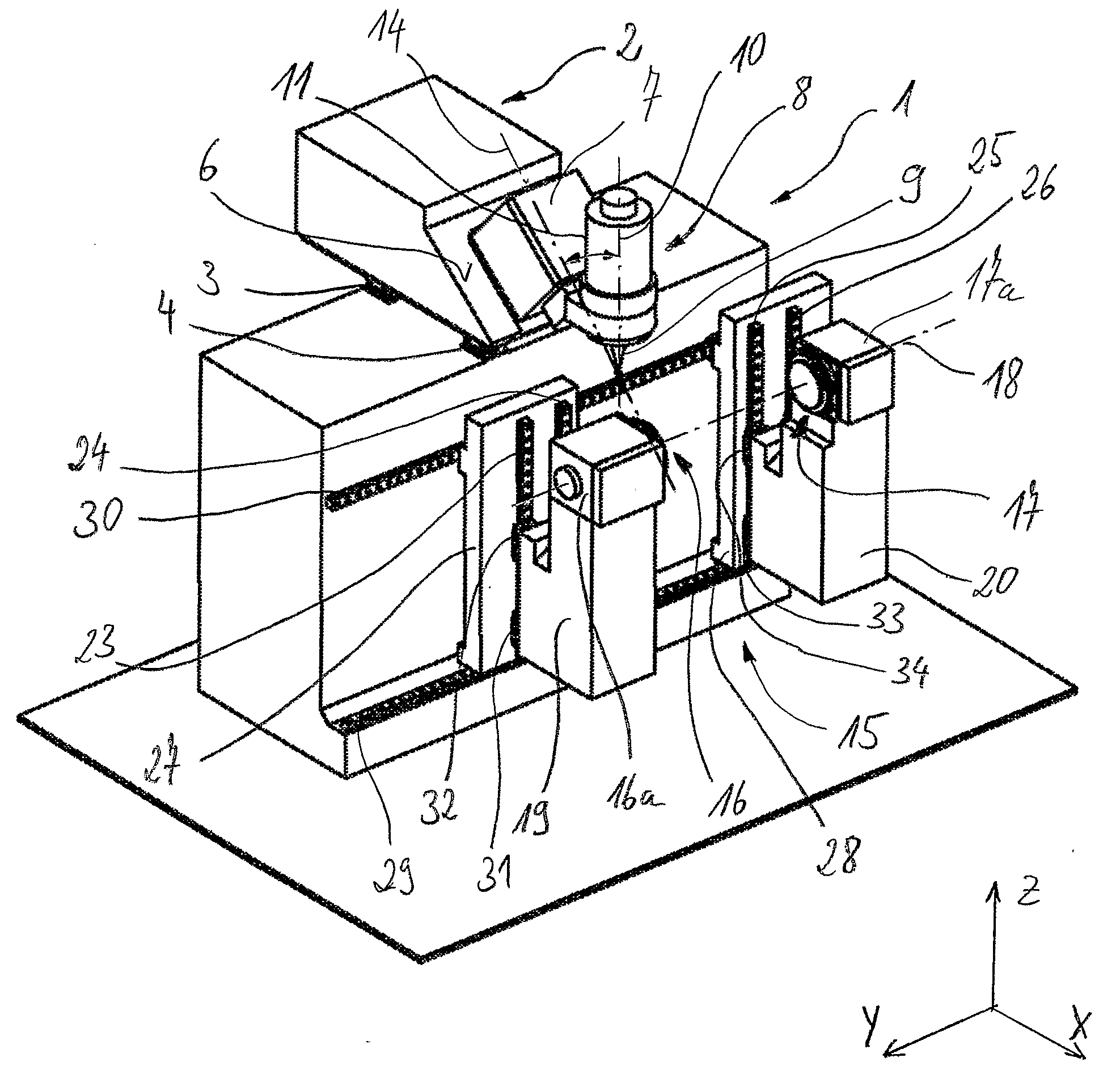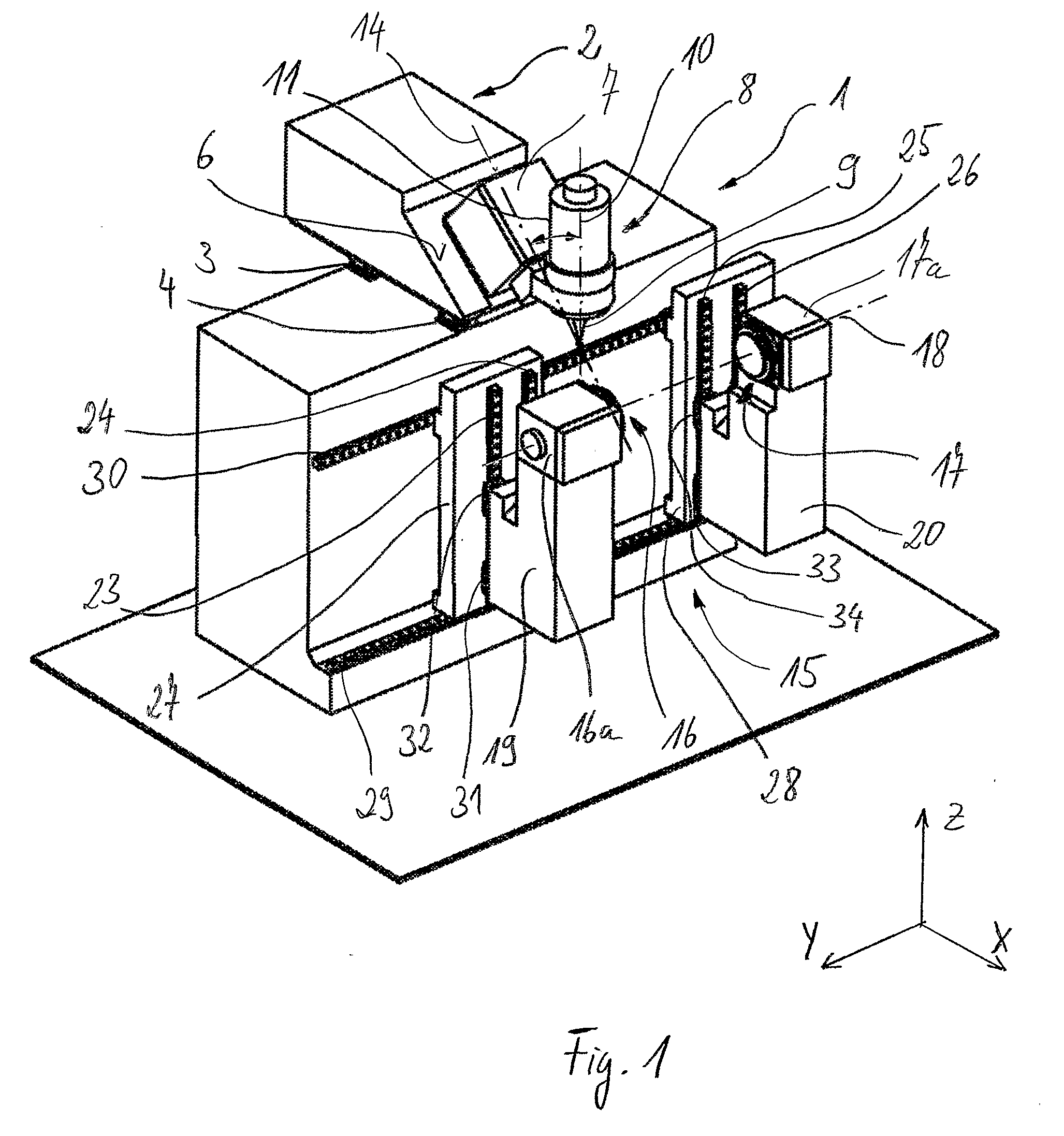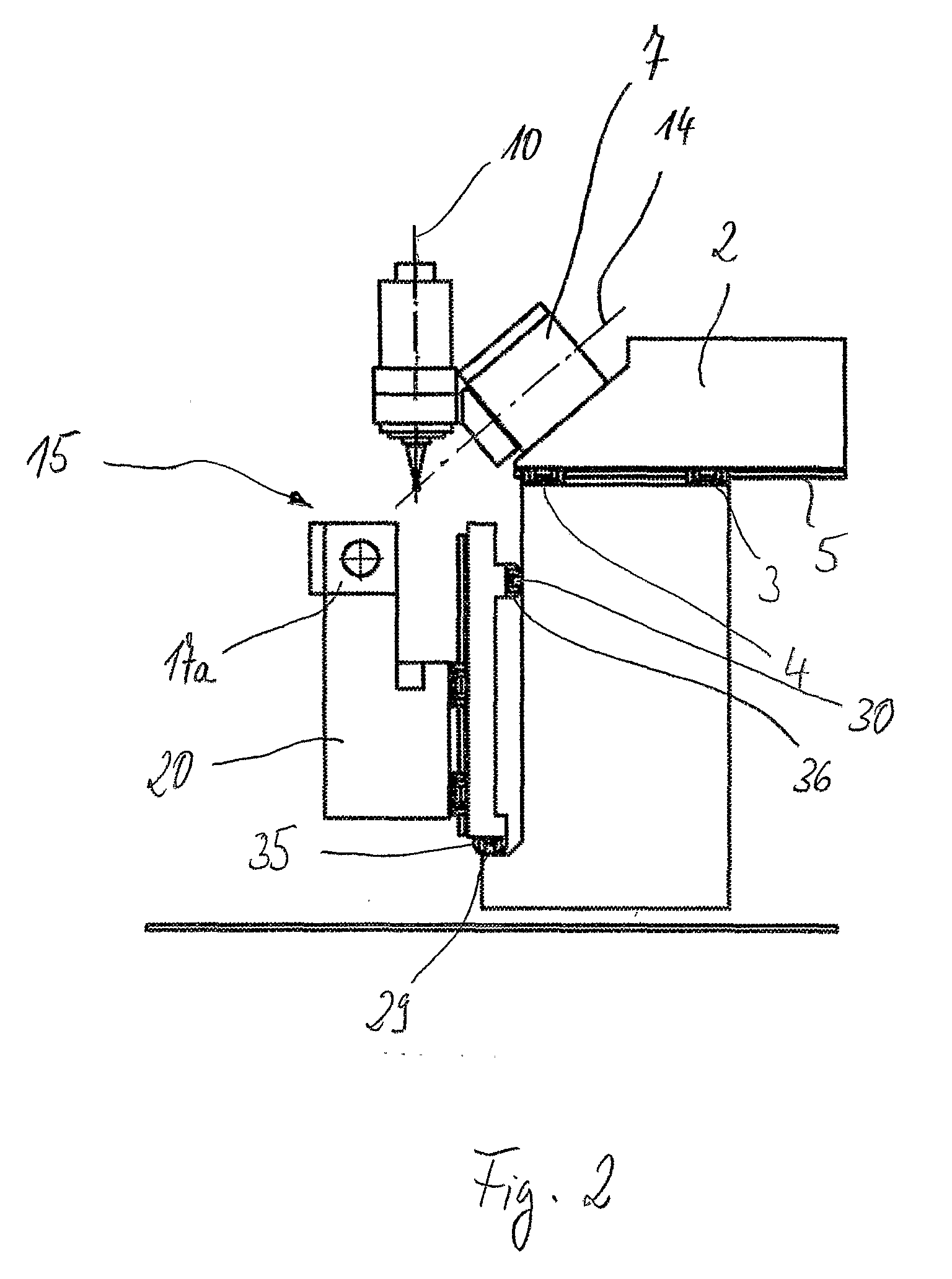[0007]It is therefore the object of the invention to provide a
machine tool of the type specified initially with a workpiece mounting having favourable properties, in particular a more variable workpiece mounting, in which equally good conditions for high manufacturing accuracy are also provided for workpieces of substantially different length. Despite these properties, the machine tools according to the invention should as far as possible also provide conditions such that the machine tool can have a high rigidity with respect to deformations.
[0010]The solution according to the invention can additionally ensure that, as a result of the clamping of the workpiece, the liner movement guides of both clamp points are exposed to substantially the same static loads. Even in the case of the dynamic loads produced during machining, a more uniform distribution can hereby be achieved over the bearing points. In addition, the solution according to the invention has the
advantage that from extremely short workpieces to workpieces whose length corresponds to the length of the workpiece axis, all workpiece lengths can be machined under always identical favourable conditions. Finally, the invention also makes it possible to compensate for geometrical inaccuracies of the base frame by means of the controller so that the manufacturing accuracy can be further improved.
[0011]A particularly rigid machine construction which has the advantages of the machine concept according to the invention can be achieved if no more than two
linear displacement axes are assigned to the tool holder. In preferred embodiments of the invention, the tool holder can be moved in only two and the workpiece mounting likewise in only two linear machining feed axes. Other than, for example, in WO 03 / 064089 A1, despite the at least four linear displacement axes, both the tool holder and also the workpiece mounting have the smallest possible number of linear displacement axes which results in a high manufacturing accuracy of the machine tools according to the invention.
[0012]At least the movements of the two clamp points along one displacement feed axis, preferably in both displacement feed axes, should be synchronised with one another. Such synchronisation can preferably be achieved by means of hardware- or
software-based regulation as part of the controller. The mechanically separate displaceability of the two clamp points or carriages along the same axis can be achieved with particularly low design expenditure if both carriages are arranged on the same rails of the linear movement guides provided for this purpose. In order to achieve a secure and stable arrangement of a workpiece between the two clamp points of the workpiece mounting, detectors can be provided for determining instantaneous positions of both clamp points for the synchronous movement of the two clamp points. Their signals should be fed to a controller. On the basis of the detection signals, the controller can compensate between the
setpoint and actual points of the two carriages or the speed of the two synchronously moving carriages. For this purpose the controller can also contain one or more control loops.
[0013]The invention is of particular importance in connection with machine tools whose tool holder is pivotable about a pivot axis, where the pivot axis preferably encloses an
acute angle with the tool axis of the clamped tool. Furthermore, in appropriate further developments the pivot axis and the tool axis intersect, or at least run very close past one another, where the point of intersection of the position having the
shortest distance should be located in the area of the tool tip. With such a solution, pivoting movements of the tool holder in which the tool tip retains its position despite the pivoting movement can be made along one or more translational axes without complex
compensating movements. In addition, the torque loading of the axis of rotation as a result of clamping forces is minimized in this case. Such pivoting movements can thus be used for alignment or tracking of the tool whereby good surface quality and accuracy can be achieved, even when the workpiece to be manufactured has a complex contour.
[0014]A machine tool according to the invention can furthermore have a circular
station whose two clamp points can receive the workpiece and during machining of the workpiece, the latter can be set in rotational movement which is provided as a machining feed movement or as a component of the feed movement of the workpiece relative to the milling tool. The circular
station can preferably execute endless rotational movements. In connection with such machine tools as are already described in EP 0 659 520 B1, a number of additional advantages are obtained in connection with the separate and multi-axial displaceability of the preferably two clamp points according to the invention. These consist, for example, in a possible reduction in the moving masses, in particular because the circular
station can be more slender. The short machining times which are possible with this machine concept anyway can be further shortened as a result of the small masses to be moved despite the high machining accuracy. The
chip flow and the
accessibility for exchanging a workpiece or front machining of the workpiece is also improved by using the invention in such a machine tool concept. The content of EP 0 659 520 B1 is therefore completely included by reference particularly with regard to the fundamental structure and the operating mode of such machine tools.
 Login to View More
Login to View More 


